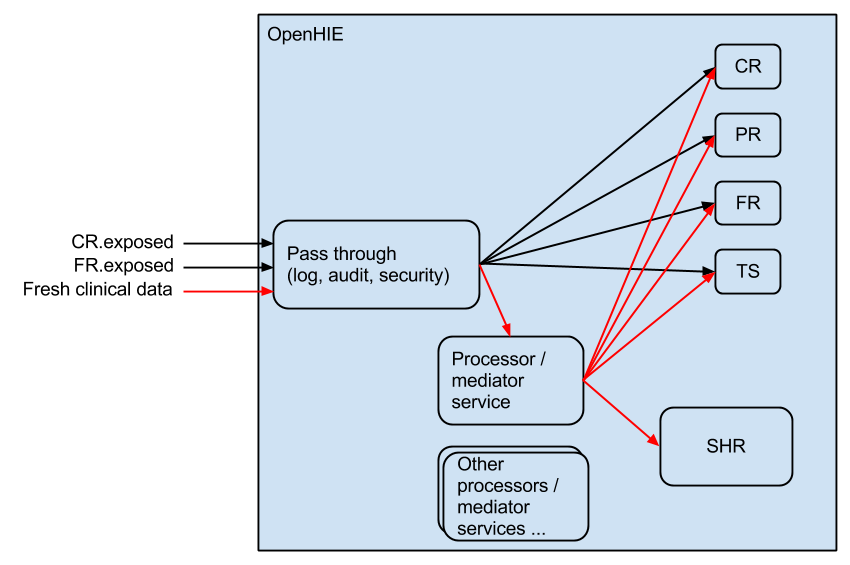Introduction
On the interoperability layer call yesterday we discussed some of the issues that have been brought up by the interoperability layer community members. Specifically, our conversation revolved around the use of a ESB for the interoperability layer. We identified some key problems that present themselves in the current ESB tools that we would NOT like to see within the interoperability layer:
...
I have included a very rough diagram of these components.
Two Diagrams
What follows are two diagrams of the central node. After some discussions, we realize that they are describing the same problem, but at two levels of generality. Ryan's shows the situation "in general". Logging and authentication for the "Main Line HL7 Data Flows" is handled by exactly the same machinery as the "pass through registry exposure" calls. Mark's diagram shows a concrete architecture conforms to Ryan's general picture. By saying that "pass through registry exposure" goes through a pass-thru apache, we are in essense limiting the amount of authentication and transformations that happen between what is exposed (message m1 sent to FR.exposed), vs what is presented to the FR (message m1')
Mark's diagram
The diagram below shows the internals of the Core Node.
...
In the middle, is a place holder for a ESB. The top and bottom layers handle very common use cases. If the need arises, an ESB could slot in at this point.
Ryan's diagram
This is an adaptation of Mark's diagram where I (Ryan) give my views on how the components of the interoperability layer should be structured. This links in with the descriptions given in the introduction. The key difference is that every message goes through the pass through component and the messages that need further orchestration or processing are forwarded on to a processor/mediation component to perform this orchestration. This allows security, persistence of messages, logging and auditing to occur in a single location.
Considering the Rwandan HIE architecture with the new Interoperability Layer thinking
Here is a diagram depicting how the current Rwandan HIE architecture could be structured to conform to the generic interoperability layer architecture given above.
...
